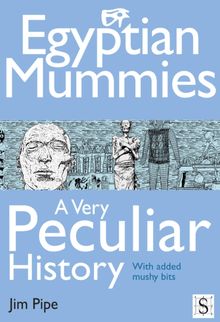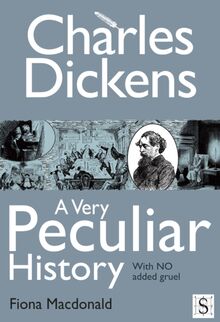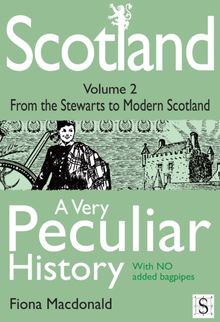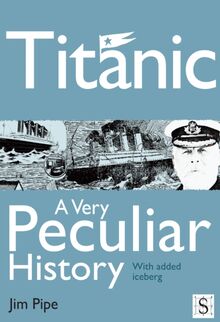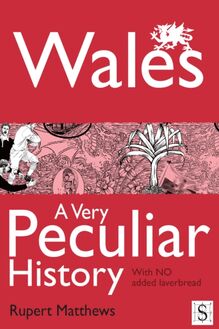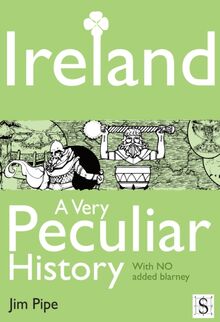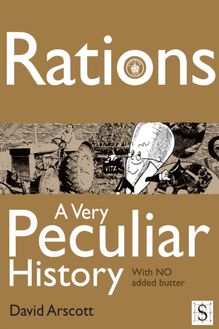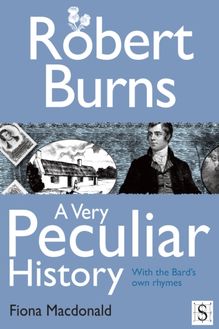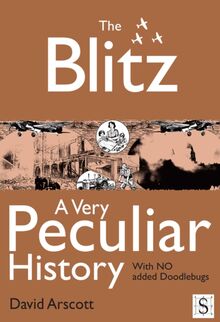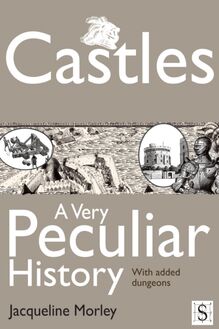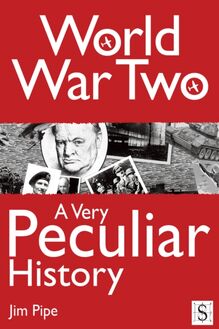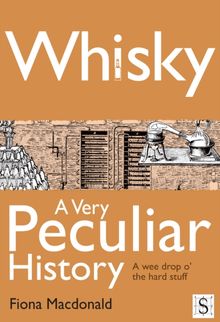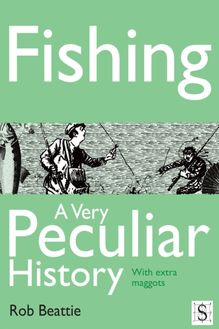-
 Univers
Univers
-
 Ebooks
Ebooks
-
 Livres audio
Livres audio
-
 Presse
Presse
-
 Podcasts
Podcasts
-
 BD
BD
-
 Documents
Documents
-
- Cours
- Révisions
- Ressources pédagogiques
- Sciences de l’éducation
- Manuels scolaires
- Langues
- Travaux de classe
- Annales de BEP
- Etudes supérieures
- Maternelle et primaire
- Fiches de lecture
- Orientation scolaire
- Méthodologie
- Corrigés de devoir
- Annales d’examens et concours
- Annales du bac
- Annales du brevet
- Rapports de stage
La lecture à portée de main
Vous pourrez modifier la taille du texte de cet ouvrage
Découvre YouScribe en t'inscrivant gratuitement
Je m'inscrisDécouvre YouScribe en t'inscrivant gratuitement
Je m'inscrisEn savoir plus
Vous pourrez modifier la taille du texte de cet ouvrage
En savoir plus

Description
Sujets
Informations
| Publié par | Andrews UK |
| Date de parution | 13 décembre 2011 |
| Nombre de lectures | 1 |
| EAN13 | 9781908759184 |
| Langue | English |
Informations légales : prix de location à la page 0,0300€. Cette information est donnée uniquement à titre indicatif conformément à la législation en vigueur.
Extrait
Title Page
SCOTLAND, A VERY PECULIAR HISTORY
VOLUME 2
From the Stewarts to Modern Scotland
by
Fiona Macdonald
Created and designed by David Salariya
Illustrated by Mark Bergin
Publisher Information
First published in Great Britain in MMIX by Book House, an imprint of
The Salariya Book Company Ltd
25 Marlborough Place, Brighton BN1 1UB
www.salariya.com
www.book-house.co.uk
Digital edition converted and distributed in 2011 by
Andrews UK Limited
www.andrewsuk.com
Editor: Jamie Pitman
Assistant editor: Jodie Leyman
© The Salariya Book Company Ltd MMIX
All rights reserved. No part of this publication may be reproduced, stored in or introduced into a retrieval system or transmitted in any form, or by any means (electronic, mechanical, photocopying, recording or otherwise) without the written permission of the publisher. Any person who does any unauthorised act in relation to this publication may be liable to criminal prosecution and civil claims for damages.
Every effort has been made to trace copyright holders. The Salariya Book Company apologises for any omissions and would be pleased, in such cases, to add an acknowledgement in future editions.
Visit our website at
www.book-house.co.uk
or go to
www.salariya.com
for free electronic versions of:
You Wouldn’t Want to be an Egyptian Mummy!
You Wouldn’t Want to be a Roman Gladiator!
You Wouldnt Want to Join Shackleton’s Polar Expedition!
You Wouldn’t Want to Sail on a 19th-Century Whaling Ship!
WARNING: The Salariya Book Company accepts no responsibility for the historical recipes in this book. They are included only for their historical interest and may not be suitable for modern use.
Dedication
To My Family
Moir, Douglas, Stewart, Morrison, Macdonald, McNaughton, McLaren, McKay, Corbett, Cameron, Campbell, Walker, McDowal, Robertson, Bond, Marks, Willis, Salariya
D.Salariya
Quotes
‘The noblest prospect which a Scotchman ever sees is the high-road that leads him to England.’
Dr Samuel Johnson
(English, 1709–1784)
‘We look to Scotland for all our ideas of civilisation.’
Voltaire (French, 1694–1778)
‘Nemo me impune lacessit!’ (‘Wha dare meddle wi’ me!’)
Motto of Prince James Edward Stewart (1688–1766, would-be king of Scotland), and of many Scottish army regiments.
‘A true Scot! Plenty of blood, plenty of pride, and a right scarcity of ducats, I warrant thee.’
Sir Walter Scott (Scottish, 1771–1832)
Ten Scottish firsts
•1617: First advanced calculating machine ‘Napier’s Bones’– a set of ivory rods, engraved with figures, used to multiply and divide large numbers and to carry out more advanced calculations. Invented by mathematician Sir John Napier, who also invented logarithms.
•1712: First post office in Britain Set up at Sanquhar, south-west Scotland, to handle messages carried across the English Border by couriers on horseback. Also said to be a meeting place for English and Scottish spies.
•1741: First public library Founded by 21 miners, the schoolmaster and the minister at Leadhills, in the Borders. Each member paid a small entry fee and an annual subscription. The first books were mostly religious works.
•1780: First copying machine Invented by engineer James Watt for making copies of business letters. He had the machine displayed in coffee-houses (where important men met) and demonstrated at the Houses of Parliament, the Bank of England and the royal court.
•1819: First works canteen Set up by Robert Owen at his New Lanark Mills. He believed well-fed, healthy employees would work better.
•1824: First inflatable life jacket Made by Charles MacIntosh (who also invented waterproof raincoats) for Sir John Franklin’s Arctic expedition. Franklin took inflatable beds, as well. Like the life jackets, the coats were made of rubber-coated cotton, and were very, very smelly.
•1861: First colour photo Taken by James Clerk Maxwell (1831–1879) and demonstrated to Britain’s top scientists at the Royal Society in London. The photo showed a tartan ribbon.
•1872: First international football match Played between teams from Scotland and England. Around 4,000 spectators watched the match, at Hamilton Crescent ground in Glasgow. The result? A draw: nil–nil.
•1887: First advertising film Made to promote Haig’s Scotch Whisky, this film is just one minute long. It shows a group of men in tartan kilts performing energetic Highland dancing.
•1908: First Boy Scout and Girl Guide groups The 1st Glasgow Scout Troop and the Glasgow Girl Guide ‘Cuckoo Patrol’ were the first official groups of Scouts and Guides in Britain. Both were inspired by British army officer Robert Baden Powell’s book Scouting for Boys, and by an earlier Scottish youth organisation, the Boys’ Brigade (founded 1883).
Putting Scotland on the map
1.c.12,000 BC: Stone Age encampment at Biggar
2.c.3100 BC: Stone houses at Skara Brae
3.c.2500 BC: Stone circles at Brodgar and (3a) Callanish
4.c.1600 BC: Mummies at Cladh Hallan, South Uist
5.c 750 BC: Celtic hillfort at Eildon Hill
6.c.100 BC: Broch at Mousa
7.AD 84: Celts fight Romans at Mons Graupius
8.AD 122–143: Romans build Hadrian’s Wall and (8a) Antonine Wall
9.AD 795–826: Vikings raid monastery on Iona
10.AD 842: Cinead MacAlpin crowned king at Scone
11.1297 and 1314: Scots defeat English invaders at Stirling Bridge and Bannockburn
12.1513: Scots badly defeated at battle of Flodden
13.1557–1558: Religious riots after Protestant Reformer John Knox returns to Edinburgh
14.1692: Massacre at Glencoe; MacDonald clan members killed by Campbells loyal to London
15.1746: Hanoverians defeat Jacobites at Culloden
16.1759: Carron Ironworks opens
17.c.1780–1820: Edinburgh New Town built
18.1853: Queen Victoria starts to build Balmoral Castle
19.1877–1890: Rail bridges over the Forth and (19a) Tay
20.1882: Crofters fight landowners for rights to land
21.2004: New Scottish Parliament building opens
Introduction
This second and last volume of Scotland: A Very Peculiar History continues Scotland’s story from 1371 until the early 21st century. It begins in turbulent times, when men die young (and mostly violently); it sighs over hopeless, romantic, Stewart rulers and rebels; and it sees Scotland lose its independence – but win international respect as the home of science and medicine and the ‘workshop of the world’. Ancient Scottish traditions fade away – and are reinvented, mostly wrongly. Scots men and women spread their names, genes, energy, enterprise, hard work and intelligence all round the world, while, in return, millions of foreigners flock to Scotland as visitors or settlers. Scottish oil gushes, Scottish lochs go nuclear, Scottish glens glint with silicon, and Scottish pride rises with devolution.
Stop press!
Historians can never relax. The past is always changing! New discoveries are being made all the time in old documents and libraries or in archaeological excavations. Each new discovery has the power to change our view of the past and help us to understand it better.
An exciting new discovery was made after Volume I of Scotland: A Very Peculiar History was released, but fortunately there is just time to include it in this volume. It changes Scotland’s history forever.
Archaeologists at Biggar, south of Glasgow, have uncovered stone tools – knives, arrows and scrapers – that date from around 12,000 BC. They show that people were hunting – and living – in southern Scotland almost 3,500 years earlier than was formerly believed. The settlers walked across the dried-up North Sea bed, from Denmark or northern Germany.
Scotland’s history just got longer!
CHAPTER ONE: Stewart Scotland
(1371–1603)
In 1371 King David II, the son of Robert the Bruce, dies without an heir, and his nephew Robert Stewart becomes King Robert II. New King Robert’s mother was dead King David’s sister, and his father was a senior royal official, the High Steward (said quickly, ‘Steward’ sounds like ‘Stewart’, and that’s where King Robert’s surname came from). Robert II founds a dynasty that rules Scotland until 1714 (and leaves at least 20 children, most of them illegitimate).
Stewart Scotland has some splendid highlights – and several very dark secrets. The early Stewart kings – and one queen! – all face similar problems...
It’s tough at the top!
Stewart rulers must:
•Fend off threats from England
•Quash rival nobles and their private armies
•Strengthen the monarchy
•‘Civilise’ their kingdom
•Control the Highlands
•Avoid becoming king too young – or too old!
•Stay alive!
1371
Amazingly – for a Scottish king – Robert II is not keen on war. His son (later Robert III) fights and rules for him. At first, Robert’s son is traditionally strong and warlike, but in 1388 he is kicked by a horse. This leaves him lame and depressed. By the end of his life, he sobs: ‘I am the worst of kings and most miserable of men.’ And he wants to be buried in a dunghill!
In the north, nobles are in control. Some are very, very nasty. One of the worst is Robert III’s brother, Alexander Stewart, known as Wolf of Badenoch. He attacks women, forces an heiress to marry him (to get a title and her family’s land) and
-
 Univers
Univers
-
 Ebooks
Ebooks
-
 Livres audio
Livres audio
-
 Presse
Presse
-
 Podcasts
Podcasts
-
 BD
BD
-
 Documents
Documents
-
Jeunesse
-
Littérature
-
Ressources professionnelles
-
Santé et bien-être
-
Savoirs
-
Education
-
Loisirs et hobbies
-
Art, musique et cinéma
-
Actualité et débat de société
-
Jeunesse
-
Littérature
-
Ressources professionnelles
-
Santé et bien-être
-
Savoirs
-
Education
-
Loisirs et hobbies
-
Art, musique et cinéma
-
Actualité et débat de société
-
Actualités
-
Lifestyle
-
Presse jeunesse
-
Presse professionnelle
-
Pratique
-
Presse sportive
-
Presse internationale
-
Culture & Médias
-
Action et Aventures
-
Science-fiction et Fantasy
-
Société
-
Jeunesse
-
Littérature
-
Ressources professionnelles
-
Santé et bien-être
-
Savoirs
-
Education
-
Loisirs et hobbies
-
Art, musique et cinéma
-
Actualité et débat de société
- Cours
- Révisions
- Ressources pédagogiques
- Sciences de l’éducation
- Manuels scolaires
- Langues
- Travaux de classe
- Annales de BEP
- Etudes supérieures
- Maternelle et primaire
- Fiches de lecture
- Orientation scolaire
- Méthodologie
- Corrigés de devoir
- Annales d’examens et concours
- Annales du bac
- Annales du brevet
- Rapports de stage
